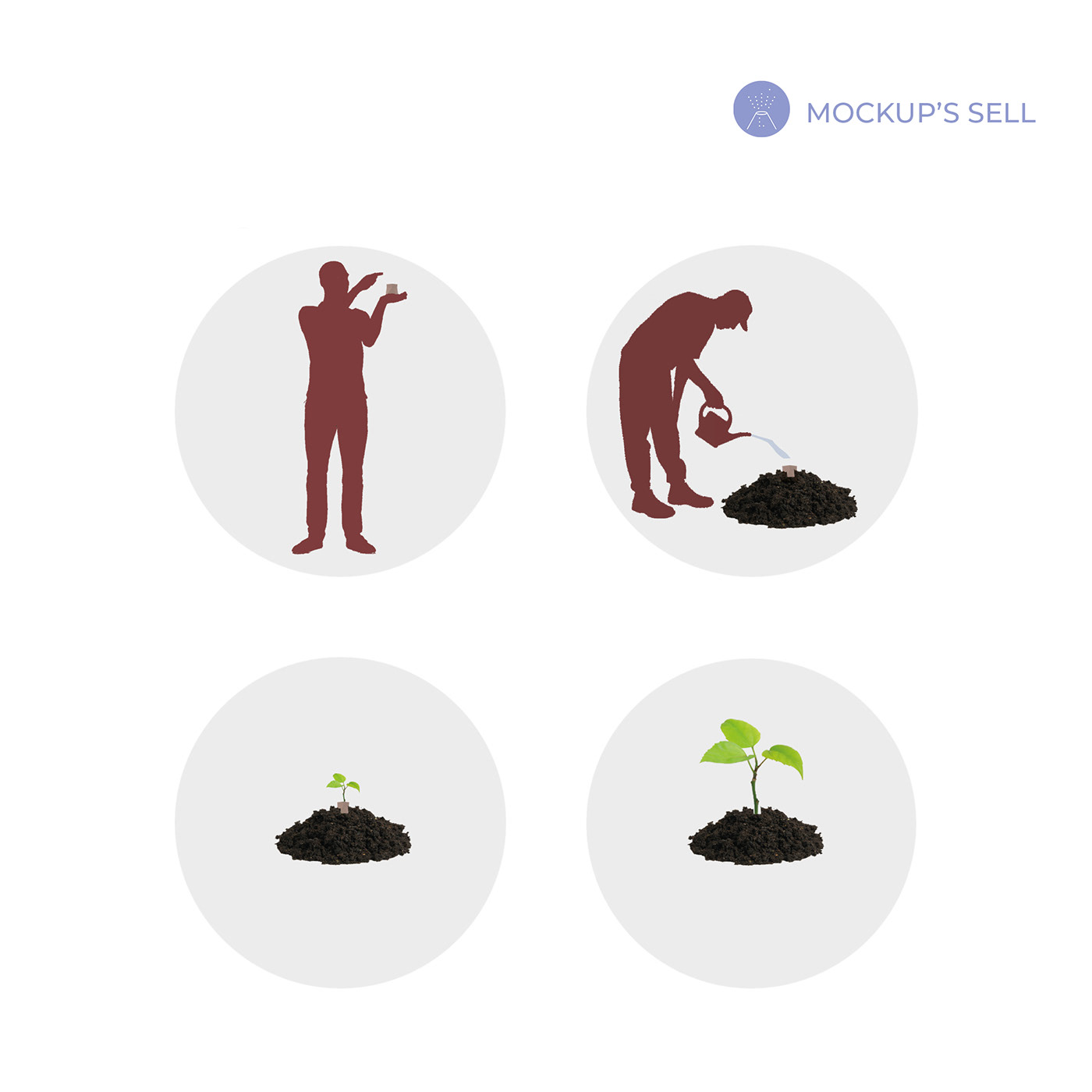
The focus area of the project is the Vesuvius National Park. The motto "Design for all" stands for the inclusive perspective of making Vesuvius accessible not only to the able-bodied but also and especially to people with disabilities. After the fires of 2017, to give a sense of rebirth, the choice made to reuse the burnt logs to revive nature's gifts seems conscious and correct. The key words of the project are inclusiveness, eco-sustainability and rebirth.

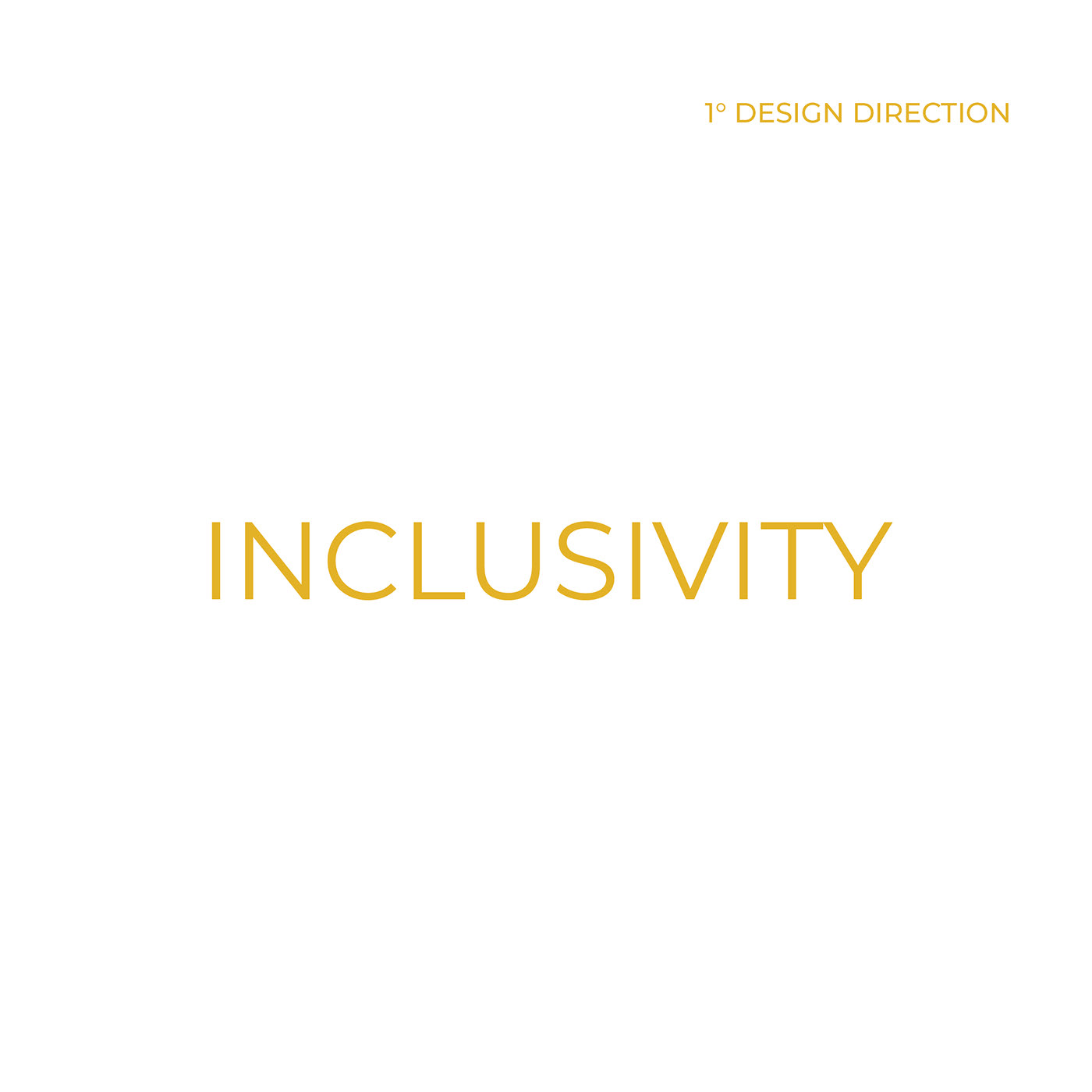
Starting from Inclusiveness, the first design direction, the project was developed after identifying the uncomfortable points of the path and the many limitations it imposed, and the need to remedy these problems emerged.



The five senses, redesigned (inspired by nature) and transformed into signposts and placed along the entire Gran Cono path, have become the guiding thread of the route, indicating and helping the public to have a complete immersive experience of the place.

The second design direction aims at eco-sustainability and the desire to realise a project that respects the environment and the project site.

The materials used will be natural and recycled, mainly using wood burnt after the 2017 fire that ruined the park. This recycled material will be used to make the installations.
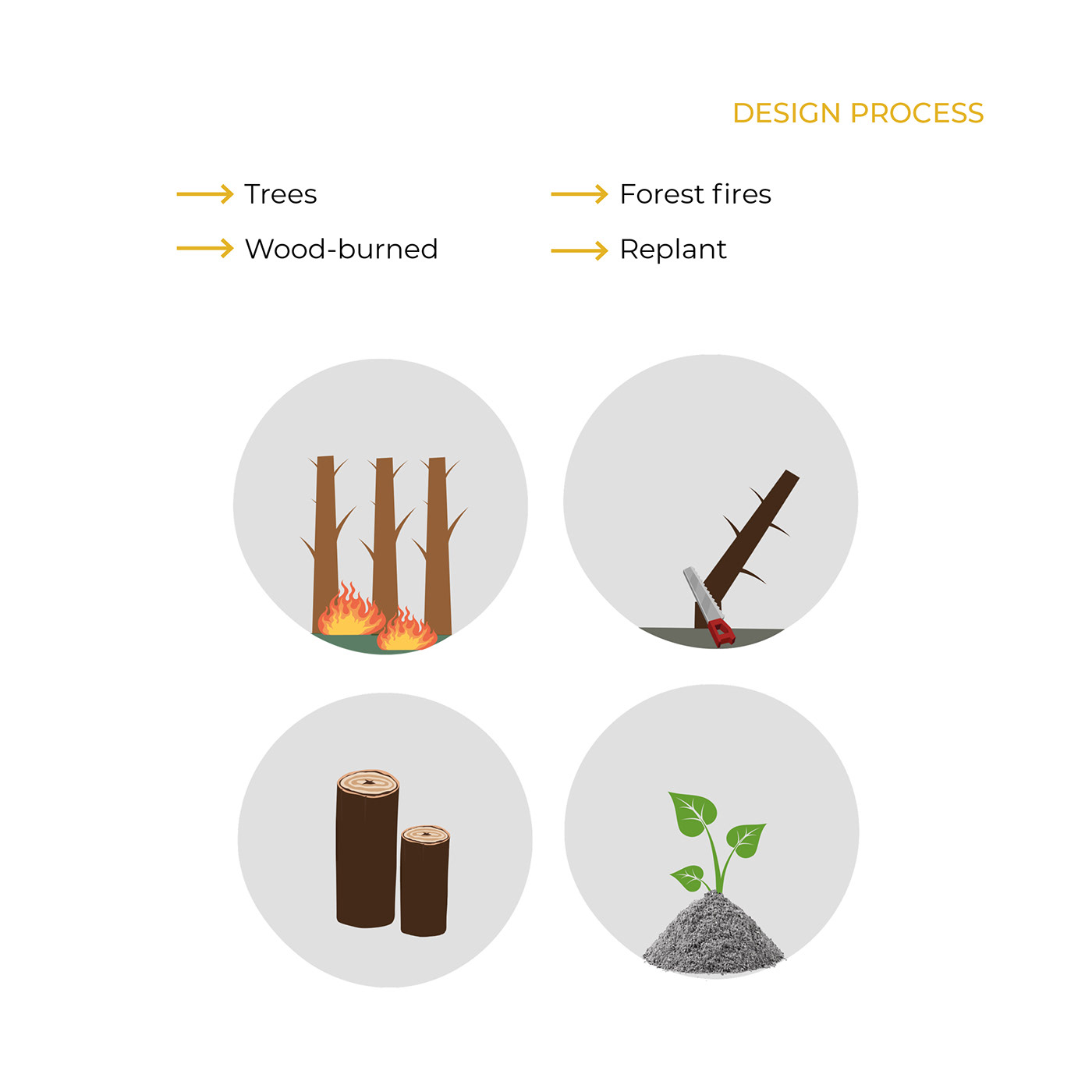
The concept is based on the geometry of the place, so that these structures can blend in with nature and dissimulate into it.


The signage indicates the different points of attraction, the directions of the trail and the diversity of the natural elements (with installations for touching, smelling, tasting, listening and observing).

The signage indicating the directions of the path to be followed were designed taking inspiration from the 'position' and 'arrow' symbols. In the first case indicating arrival at a place of attraction and in the second case the direction to follow.

The symbols obtained above were used for the signage, superimposing them on the wooden logs.

The shapes and sizes of these elements vary in height and diameter so as to indicate the diversity of existing natural features. Sometimes they are also used to indicate viewpoints present and directing the view, or indicating the direction along which to proceed.









At two different points along the path are the two "stops", one near the ticket office and one at the beginning of the crater path, respectively. The focus is on the difficulty of usability of the route, trying to highlight the difficulty for persons with motor disabilities by trying to make it open to all.
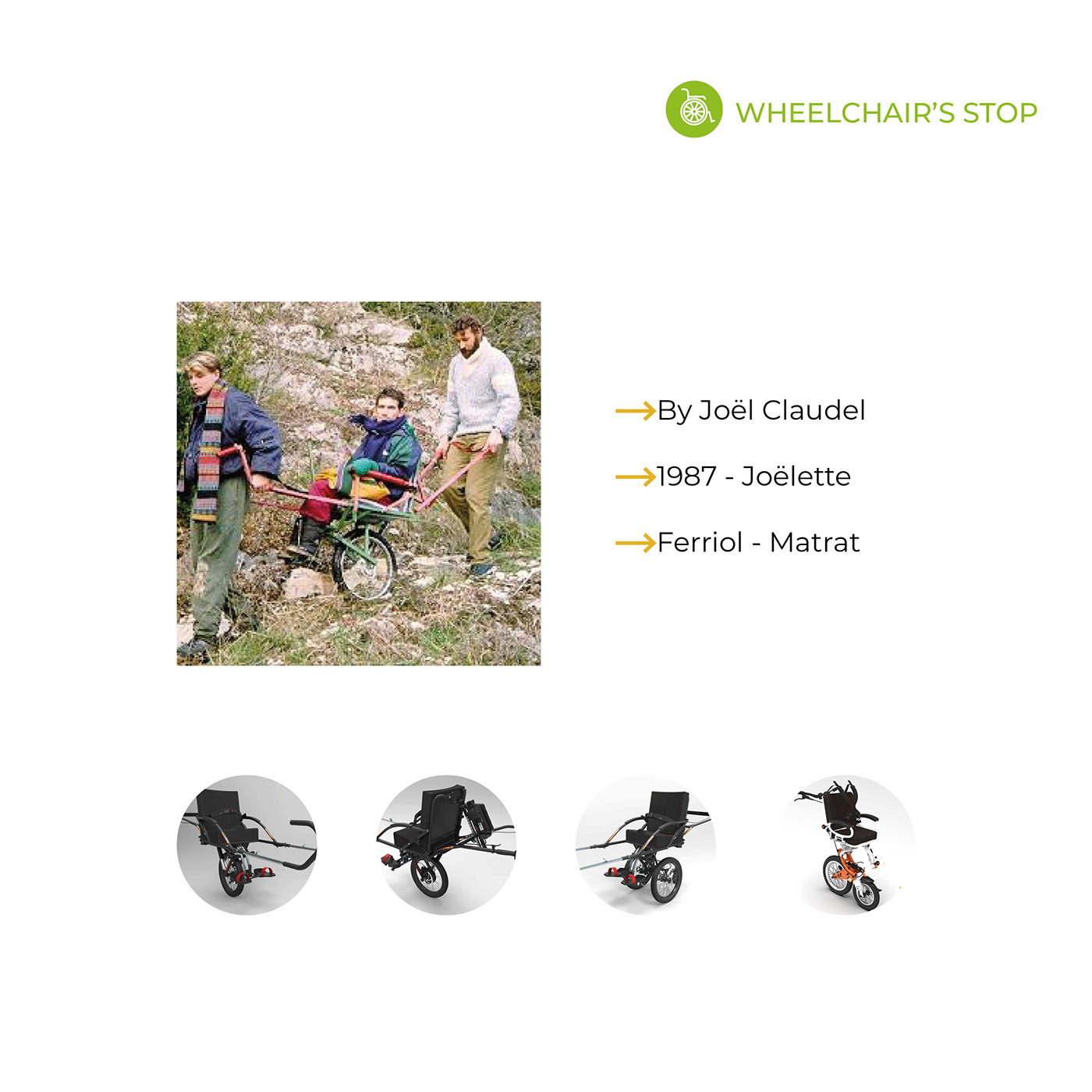
Integrating the use of a system specially designed for them is the Jolette chair, which is specially designed to enable disabled people to carry out activities such as hiking in the mountains or navigating steep or bumpy roads. The idea for this particular wheelchair came from mountain guide Joel Claudel in 1987. The French manufacturer Ferriol Matrata decided to make and continue to perfect it in various models.

This 'stop' is the place where the wheelchair can be exchanged for the Jolette to start the route. The project started with the use of a vertical element, which acts as a stop sign, but also allows the wheelchair to be stopped thanks to the use of special holes in the lower part of the element. Here you can borrow the Jolette chair and start the route.



The next stop is three closely related senses, more precisely touch, smell and taste. They too are based on the elements of nature and are developed differently depending on the type of sense. The elements used for these three senses vary in size but above all according to what they are to contain within them, with the taller ones being used mainly for smell, the medium-sized ones for touch and the smaller ones for taste.
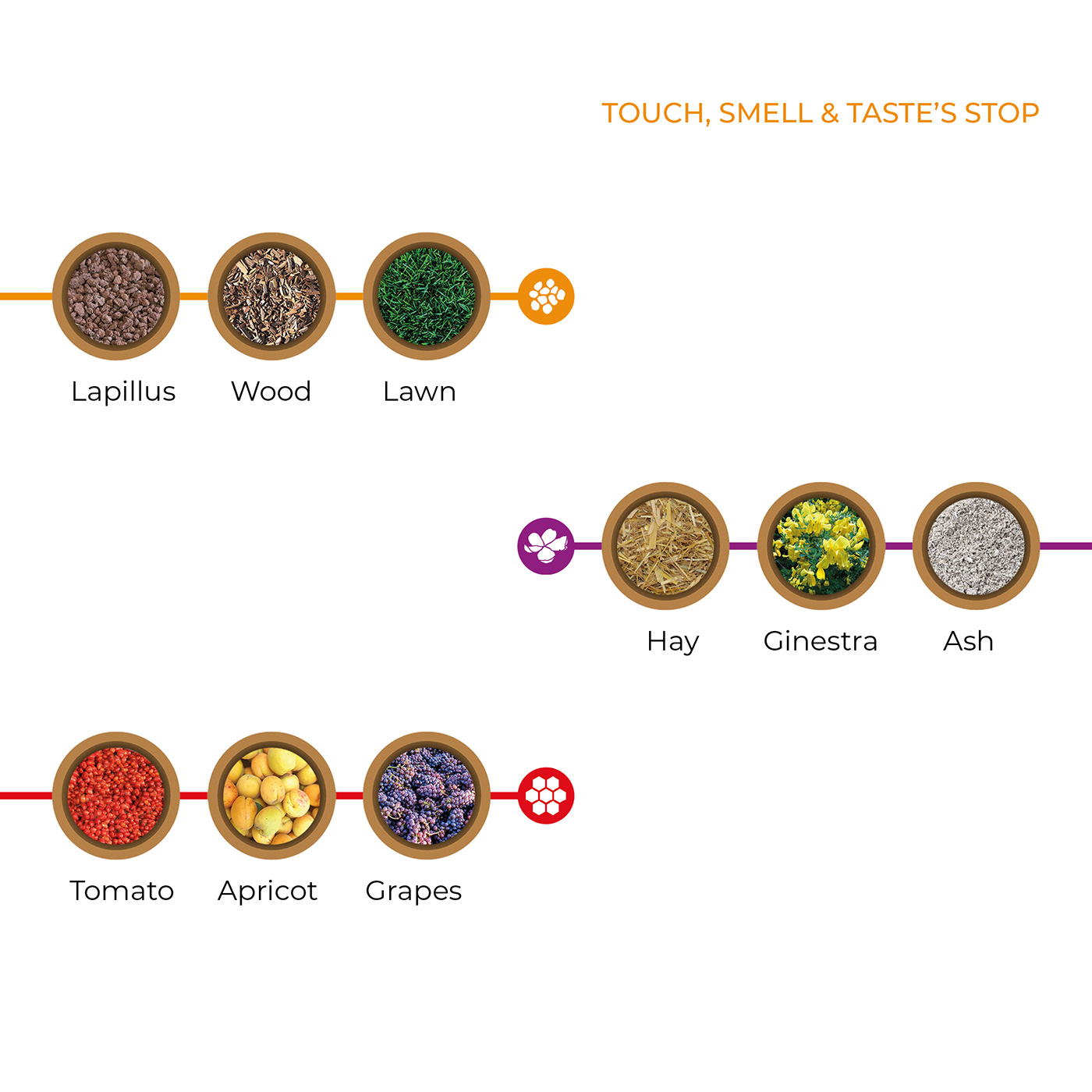
The different elements will contain, for the sense of touch, elements such as lapilli, wood and grass; for the sense of smell, straw, flowers such as broom (typical of the area) and ash; and finally, for taste, some typical products such as tomatoes from the Piennolo, apricots and wine (the famous Lacrima Chrysti).







The stop dedicated to hearing, it has been hypothesised to stimulate the sense of hearing in two different ways, the first exploits the different species of birds present in the area, through a sort of call capable of attracting them so that visitors can interact with them; the second is an instalation that exploits the wind and the sounds it can create.

Among the different species of birds on Vesuvius are these, which are the best known.
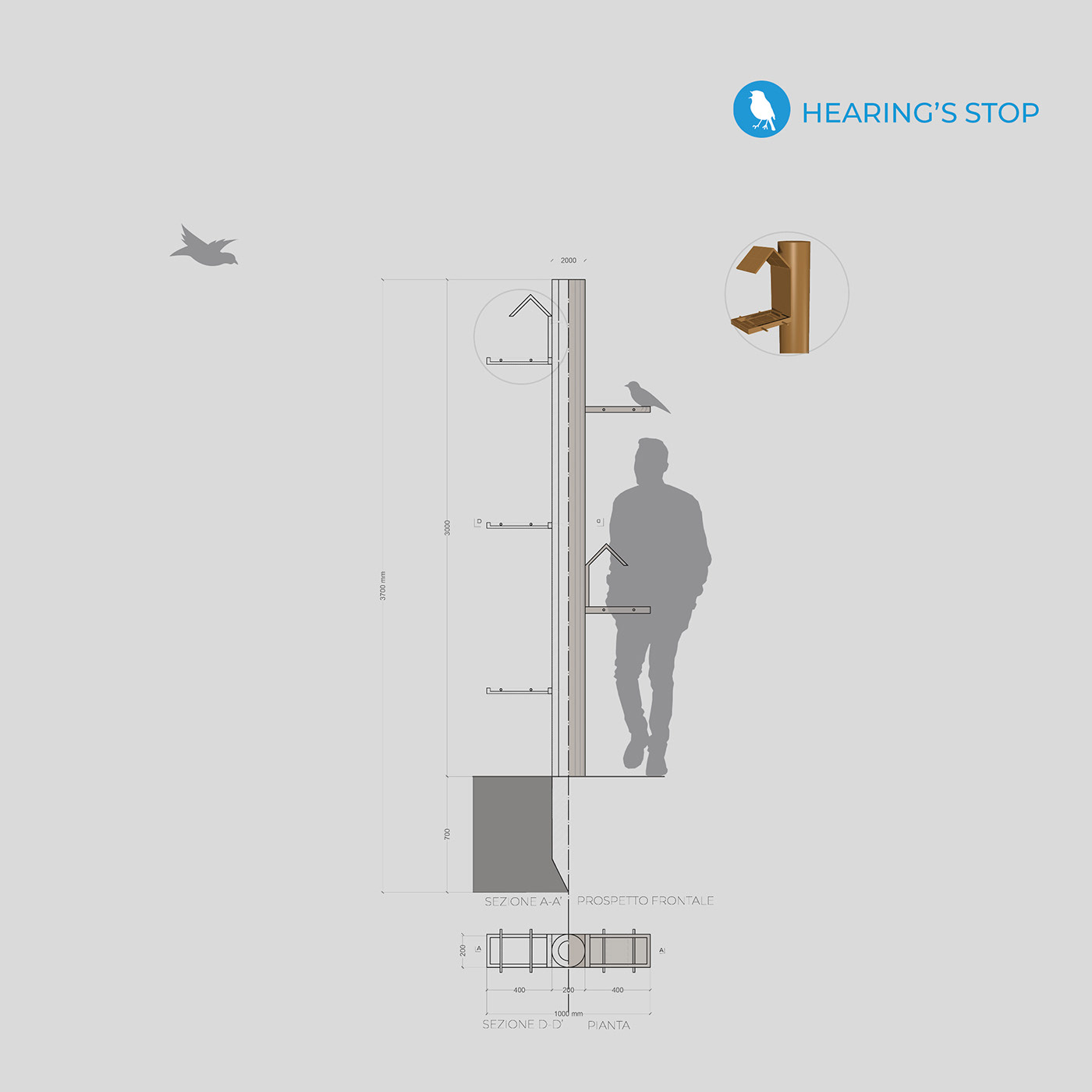
The structure is shaped like that of a tree with its branches. It consists of a vertical element embedded in the ground, and on the sides there are trays/containers where feed is stored, alternating with others that also serve as shelters for the birds.



The other way to stimulate hearing is through a wind installation; the ecological aspect of this installation is visible as some of these poles have a wind blade at the end.
This installation using corten steel poles, which blends well with the other elements constructed, consists of elements of varying heights and different diameters. Each of these has slits that allow the wind to enter and exit, producing a sound. The installation will be placed where the wind is greatest.
This installation using corten steel poles, which blends well with the other elements constructed, consists of elements of varying heights and different diameters. Each of these has slits that allow the wind to enter and exit, producing a sound. The installation will be placed where the wind is greatest.

What makes the installation even more interesting is the possibility for anyone to pass through the structures thanks to the space between the different vertical elements.


The third design direction is rebirth, meaning a broader concept of being able to breathe new life into the flora of the Vesuvius National Park, but also elsewhere, where desired through the use of a mockup.

The mockup will be available for purchase two points along the path, inside it will be placed the seeds of various plants and flowers strictly from the local flora.
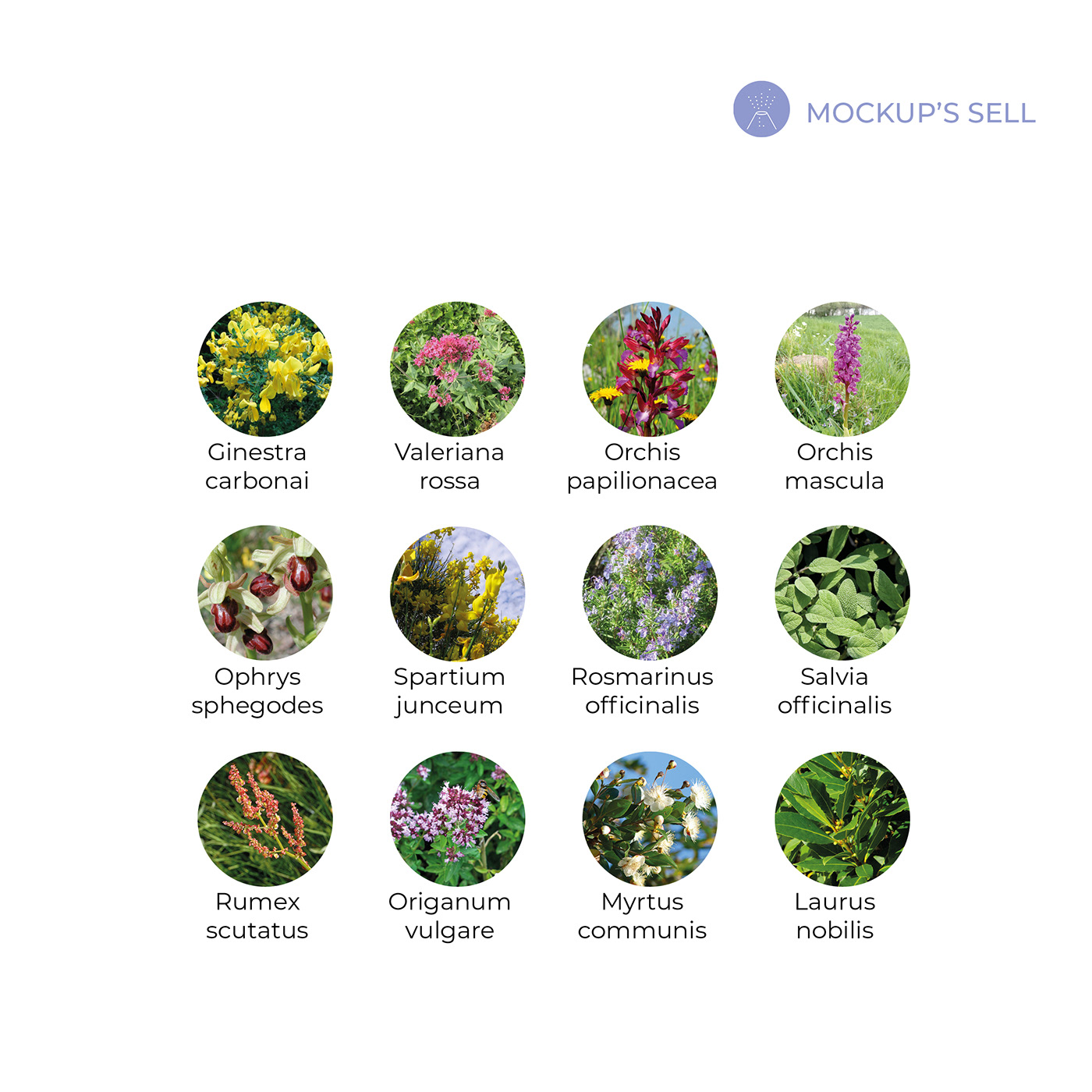


The idea is to create biodegradable capsules that will contain ashes (used as fertilizer) and seeds of local flowers and plants.

Then the capsules will be placed inside the mockup made of bagasse, or sugarcane pulp, which is a biodegradable, recycled and recyclable material.

The principle of using these elements is that once planted they can give rise to a new plant so as to contribute to raising awareness of flora protection.
